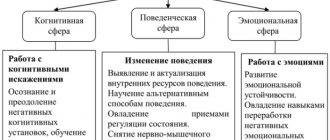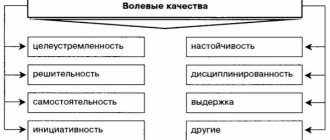Psychologist Sergei Klyuchnikov
cantrium.com | MySuomi.com | HELSINKI | TourMANN.com
When hearing the words “ self-regulation ” and “self-management,” most people have an image of a person sitting in a psychological relief room in a coachman’s position and muttering to himself self-hypnosis formulas: “My heart beats powerfully and evenly.”
However, such somewhat artificial self-regulation is of little use in communication situations.
Here you need to manage yourself in a completely different way, and it is this communicative self-regulation that a person carries out while in the thick of life that is the most important.
It is needed to solve a number of problems:
- to achieve a set near or distant goal, especially if this involves the presence of obstacles;
- to defend oneself in situations of conflict, volitional pressure, manipulation;
— to enter a state of resonance and emotional rapprochement with a person;
- to relieve psychological trauma and negative emotional impressions received during communication;
— for a better understanding of another person, turning on the mechanisms of intuition and recognition;
- for the harmony of your inner world. allowing both you and your partner to communicate with each other more comfortably and positively;
- to carry out internal work to improve oneself.
Without self-control there can be no improvement of a person and no achievement of any serious goals.
Other smart people who will quite reasonably say:
“Since he cannot manage himself, we will take over this function of his life and manage his life for our own purposes more effectively than he did.”
What is self-regulation and how does self-regulation manifest itself in communication ?
To answer this question, you need to understand who in a person will perform the executive function and what “you” is.
The controlling function in a person should be performed by his “controlling self” - a fusion of consciousness and will, an internal subject capable of giving and implementing commands (decisions made).
It was not for nothing that I wrote “should” because for many people this single controlling I, which ensures the integrity of his personality, is absent, and the control functions wander from one of his moods to another, from one social role and subpersonality to another.
Since most people, instead of control and order, have “ruin in their heads,” and therefore in their lives, it is obvious that such self-regulation is carried out chaotically and unsystematically.
“With yourself,” which needs to be managed, is also not all simple and clear - too many parts of the human psyche and consciousness are included in it.
This is the body, which needs control over its movements, and emotions, many of which cannot be thrown out - indecent!, and thoughts spinning in the head like snowflakes, and not allowing the mind to concentrate and think, and decisions made and implemented with great difficulty , and actions, often erroneous and absurd, and our general behavior in communication, which periodically makes us feel dissatisfied.
“Oneself” is everything that is not the “controlling Self”, in which both consciousness and will are united.
To manage yourself and carry out self-regulation in communication , you need to know yourself at least to some extent. This is impossible without studying your psychological characteristics at all levels, that is, without conscious observation of yourself.
What will a person who strives to achieve harmonious self-regulation in communication see if he tries to look at his feelings and experiences with an attentive, slightly detached eye?
At first glance, he will be faced with a chaotic stream of thoughts, words and images flashing in his head without any logic or meaning.
These will be the so-called “mental processes” - the most dynamic and rapidly occurring formations of the psyche.
In Buddhism, with its culture of sophisticated introspection, they were called the stream of “skandhas” - the smallest elements of the psyche.
You can compare this stream to a mountain or lowland river flowing in some direction.
If we are persistent in our attempts to understand ourselves, we will see that these flows sometimes slow down and temporarily turn into a kind of psychological field with a certain plus or minus sign, as if a river suddenly overflowed and turned into a lake.
Such a psychological field is a human emotional state of a positive or negative plane, in which chaotic sensations, images and thoughts temporarily acquire the emotional coloring that we are experiencing at the moment.
But these moods, as a rule, do not last forever, and after visiting us, they leave, giving way to other psycho-emotional states.
The human soul has always been an arena for changeable moods, so self-regulation always requires effort.
Watching their play, we can see that some of them come rarely, others often, and sometimes take up permanent residence in our hearts, making up our predominant emotional background.
Everything that happens to us during communication has a strong influence on us, bringing to life some moods and pushing away others.
The concept of state includes not only emotional moods, but also our well-being, body and muscle sensations, vitality and energy.
We can see that vital energy and emotions influence each other: the healthier and more energetic we are, the better our mood and vice versa.
By studying ourselves, we can gradually compile a table of our basic emotional states that periodically pass through our inner world, positive (joy, delight, admiration, interest, love) and negative (anxiety, fear, anger, guilt, resentment, self-pity, apathy).
Some of them we like and influence our lives positively, others prevent us from being effective and happy.
When we enter a meta-state of awareness (the presence of spirit in any process), it greatly affects each of the listed emotional states.
Positive states, after such careful study, remain and become even stronger, while negative states, on the contrary, go away. Self-regulation is based on the law of self-control: self-observation strengthens a person’s positive experiences and thoughts and at the same time weakens or even completely neutralizes negative emotions and states.
I described in more detail how to work on myself in this direction in my previous books, especially in “Inner Strength” and “ Master of Self-Regulation .”
If we observe ourselves and study ourselves even more closely, we will see that in addition to rapidly occurring mental processes and states moving at an average speed, there are psychological formations in it that practically do not change or change extremely slowly.
They can be compared to the banks of a river, which do not change for a long time, but can gradually erode.
These are the so-called “mental properties” or personality traits, facets of character: courage - cowardice, generosity - greed, confidence - timidity, honesty - deceit.
If we don’t do anything with ourselves, don’t work on ourselves, don’t engage in self-regulation and maintain stable external living conditions, such mental properties will accompany us throughout our lives without changes.
Religions and teachings say that all negativity remains in the human soul even after death, but there it is no longer the person himself who is engaged in its elimination, but the divine mechanism of purification through suffering in the hellish worlds.
And many of our far from best qualities remain with us like birthmarks, even if thanks to them we have made some serious mistakes in life. A person has difficulty learning lessons from his defeats.
If we start working on ourselves, engage in self-regulation and are diligent and consistent, negative qualities will weaken and positive ones will strengthen.
The harsh circumstances in life that we sometimes find ourselves in also change these qualities, sometimes for the better and sometimes for the worse.
It depends on us, and on character, and on the strength of circumstances and on the environment itself.
We can observe ourselves for a long time, but it is unlikely that on our own, without outside help from more experienced and trained people, we will be able to see that these qualities are combined into certain psychological programs, which, paradoxically as it sounds, have a certain individuality.
If you look at these programs from the point of view of behavior, they will appear as certain social roles that each of us periodically has to play with different people.
If we look at them from the inside, they will turn out to be for us some kind of small selves, psychological “micro-people”, which in psychology are called subpersonalities.
The study of these subpersonalities is the beginning of self-regulation , its first steps.
Unlike our main personality, which has different characteristics and facets, each of the subpersonalities is one-dimensional and expresses only one facet and quality.
It resembles the role played by the actors of the ancient theater, which constituted one single feature with the name written on the mask, worn before the performance - “Vice”, “Virtue”, “Evil”, “Honor”, “Envy”.
Each person can have many subpersonalities - their names are legion.
But there are several main ones that form the basis of his personality and character.
A person periodically identifies with each of them, acts on its behalf, pronounces words, makes promises, makes decisions.
So one person can carry within himself such a set of subpersonalities as, for example, “a good family man”, “a merry fellow for friends”, “a tyrant for colleagues”, while another can have within himself a “coward”, “a workaholic”, “a caring son”, “ whiner."
Connections between subpersonalities can be very weak.
At the moment of making a decision, one subpersonality may not realize that the other is signing up for clearly impossible obligations and will then greatly regret that it did not intervene in time.
It also happens that subpersonalities actively fight among themselves, leading a person into a state of active internal conflict.
The one with which the person is most often identified wins.
To successfully change yourself for the better, you must study yourself, consult with loved ones and experienced people who know you well and whom you trust, and make a list of your main subpersonalities.
He will help you in further work on yourself, in neutralizing negative subpersonalities with the help of competent self-regulation .
Social Like
Methods of self-regulation associated with movement
Mental stress initiates muscle tension – muscle tension. However, the ability to relax muscles can relieve neuropsychic tension and restore strength reserves in the shortest possible time.
In most cases, a person cannot relax all the muscles overnight, so it is recommended to focus attention on the most tense areas of the body.
The technique for effective muscle relaxation is as follows:
- You need to sit down and take a comfortable body position
- Then you should close your eyes and begin to breathe slowly and deeply.
- After this, you need to take an internal look at your entire body, starting from the top of your head and ending with your toes or vice versa, thus finding the most tense places (usually the stomach, shoulders, back of the head, neck, jaw, lips or mouth)
- The next step will be even stronger tension in the places of muscle clamps, up to trembling (you need to tense while inhaling)
- Now we need to try to feel the new tension
- And at the end you need to sharply relax (you need to relax while exhaling)
*This procedure must be repeated several times
If the muscle is relaxed really well, it will feel warm and pleasantly heavy. In the same case, if you can’t remove the clamp, you can try giving yourself a light massage on the tense area.
Business communication: types
Having considered the main communication styles in a work environment, we can move on to the types of work dialogue:
- Direct communication is characterized by direct contact between interlocutors. It is effective because it becomes possible to have an emotional influence on the interlocutor.
- Indirect communication is characterized by the presence of distance between interlocutors. Indirect communication includes business correspondence - information is conveyed in the form of a business letter. This takes into account its design, presentation capacity, and relevance over a certain period of time.
Business communication: styles
Despite the fact that business communication is generally characterized by a work environment, when talking with your interlocutor, you can adhere to a certain line of behavior, or “style,” in order to understand his mood:
- Actual behavior style. This style is designed to operate with facts, based on documented information. Such a communicator remembers everything said, so you should be pedantic so as not to be driven into a corner.
- Intuitive style of behavior: more free and relaxed, designed to find a creative solution to a problem in the process of putting forward options.
- Normative style. It is characteristic of people who attach great importance to compliance with legal norms. It is also necessary to show an interest in maintaining order for greater mutual understanding.
- The analytical communication style shows a desire for a logical basis for events. When communicating with such a communicator, you should monitor the orderliness of the dialogue and be patient.










